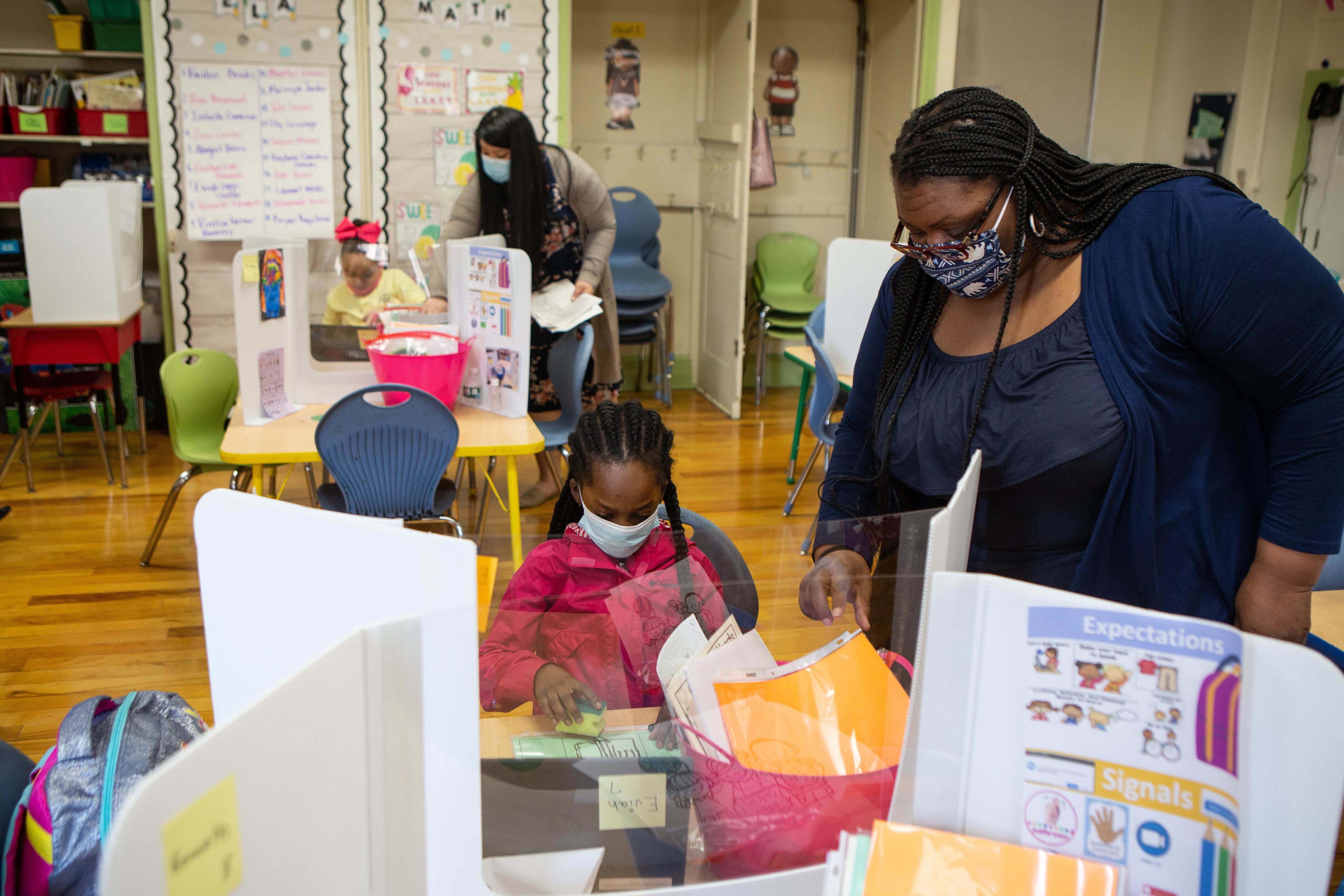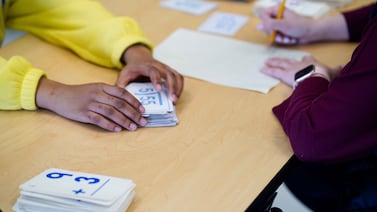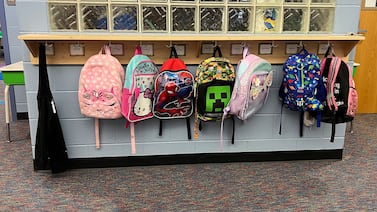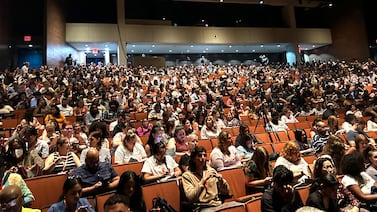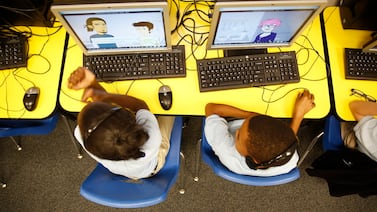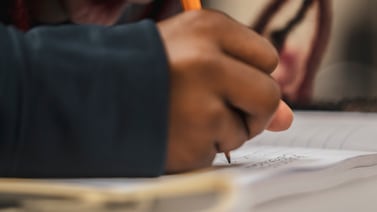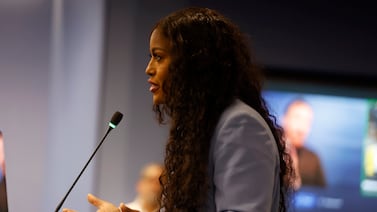With around 100 students, Discovery is Newark’s smallest charter school. This school year, its state and local funding add up to about $1.6 million — just enough to make ends meet.
“You’re always, always trying to save every dollar you can to make it,” said Denis Cretinon, head of the grade 4-8 school.
But after Congress passed three massive aid packages to help schools respond to the pandemic, Discovery found itself with nearly $1 million extra to spend over a few years.
“Suddenly,” Cretinon said, “you receive money that is like the equivalent of half a year’s budget.”
School districts across the country are similarly flush with federal aid. The COVID relief money amounts to more than $190 billion for public and private schools nationwide, with over $4 billion going to New Jersey.
The money can be put towards a wide range of uses, including cleaning supplies and building upgrades to reduce COVID spread, technology for remote learning, and efforts to address academic and mental health challenges caused by the pandemic. Each aid package comes with its own rules and deadlines, but the last of the money must be spent by fall 2024.
The Newark school district, which educates some 37,000 students, has attracted attention for the whopping $282 million in COVID aid it’s set to receive. But the city’s publicly funded, independently operated charter schools, which enroll more than 20,000 students, also are collecting a heap of COVID relief money. Together, the 17 separate organizations that operate Newark charter schools have been allocated more than $160 million in pandemic aid, according to a Chalkbeat analysis.
So what are they doing with the money? Chalkbeat reviewed the schools’ spending plans to find out.
Use the tool at the bottom of this story to find each school’s aid amount and spending plan.
The plans, which districts were required to post publicly, only cover the most recent (and largest) relief package. The Newark charter schools’ plans vary in specificity — a couple included dollar amounts, while most simply listed expected purchases — and could change as schools spend the money over the next few years. Yet they still offer a window into what the schools see as the most urgent needs created by the pandemic and how they plan to address them.
“What are really the needs of our kids?” said Cretinon. “For me, that’s what I follow.”
Making schools safer
After more than a year of remote learning, it took a lot of work — and money — to reopen school buildings last fall.
Newark charter schools spent a portion of their third aid package on face masks, sanitizing supplies, desk partitions, thermometers, and other items to reduce COVID transmission, according to the plans. They also replaced air filters, bought classroom air purifiers, and upgraded schoolwide ventilation systems.
Roseville Community Charter School, which rents an old Catholic school building in Newark’s North Ward, needed to buy a totally new HVAC system. In its spending plan, it explained why: “We have a building that is more than 100 years old.”
Other schools planned to hire more nurses and custodians, and to pay for routine COVID testing for staff and students. Many also invested in laptops, wireless hotspots, and cameras for remote learning — purchases that proved essential when schools briefly reverted to remote learning last month due to a surge in COVID cases.
Helping students catch up
During remote learning, many students watched their academic progress slow to a crawl. Black, Hispanic, and economically disadvantaged students, on average, fell furthest behind.
Districts must use at least 20% of their third aid package to help students make up that lost learning. Newark charter schools generally plan to do that in three ways: assisting teachers, directly supporting students, and monitoring student progress.
For teachers, that means extra training on how to “accelerate” student learning, new or revised curricula and teaching materials, and instructional coaches to boost their effectiveness. For students, the plans call for online programs designed to target skill gaps, more classroom aides and specialists to work individually with students, assessments to identify their academic needs and track their growth, and extra learning time after school, on weekends, and in the summer.
A word that pops up in many plans is tutoring. Many experts have promoted tutoring as an effective way to address learning loss, and U.S. Education Secretary Miguel Cardona recently challenged schools to offer every struggling student at least 90 minutes of tutoring a week.
But the charter school plans provide few details about the format of the tutoring, which is key. Researchers say the most effective tutoring requires well-trained tutors, very small groups, and multiple sessions per week.
At Discovery, the federal aid allowed the school to bring in teachers-in-training from Rutgers University-Newark to tutor students several days a week, and to offer after-school tutoring to students who need extra help. The school also hired additional instructors who work with small groups of students during class and at lunch.
“For some kids, it’s absolutely crucial,” Cretinon said.
Promoting student wellness
The pandemic saddled many young people with anxiety, stress, loneliness, and grief. Now schools are trying to help ease the psychic load.
Many of the charter school plans describe school-wide efforts, including lessons on identifying and managing emotions, mental health training for teachers and workshops for families, and a shift away from punitive discipline practices. Several schools also said they’ll offer students counseling, mentoring, art therapy, or workshops on topics such as grief management and mindfulness. The schools expect to hire additional staffers or pay private clinics or universities to provide those services.
Marion P. Thomas Charter School, which enrolled about 1,400 students last school year, used its COVID money to add two extra social worker positions and an attendance counselor, said Chris Abbaleo, assistant superintendent of curriculum and instruction. The school also paid for teacher training on social-emotional learning and plans to bring in mental health clinicians to work with students.
“Those are things you typically can’t budget for,” Abbaleo said. But now, thanks to the federal aid, they can. “You’re doing things that you usually wouldn’t be able to do.”
The tool below shows how much COVID relief money each Newark charter school was allocated, including grants for specific uses. It also features summaries of each school’s spending plan for the third round of federal aid. (The aid is officially called ESSER, or the Elementary and Secondary School Emergency Relief Fund.)

